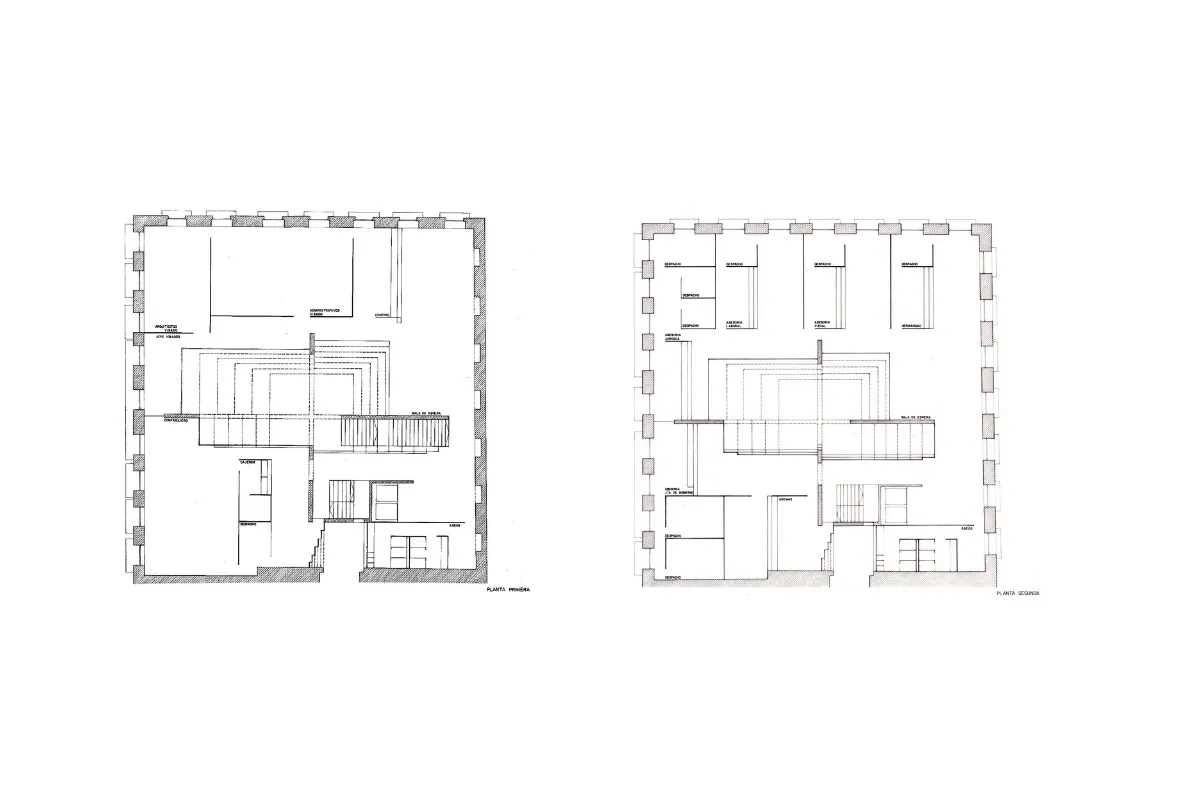The fact that it is a listed building, with no intervention permitted on its envelope, either on the façade or the roof, led us to work from the inside out, based on the building’s typology.
The building begins with a patio, which is modified floor by floor, eventually closing in on the perimeter of the original roof. This deformation of the patios allows us to introduce greater light and perspectives into the interior, as all the building’s activity is concentrated there. The corners are broken, as the building is supported by four large, centered concrete screens, which gradually move closer together as the building increases in height, until they join at the top, thus allowing the different floors to move forward or backward, as needed.
The central patio is covered on the second floor by a structure of vertical and horizontal glass panels, supported by a metal structure.
The dividing patio is also modified, folding in on itself to avoid visual connection with the patio of the neighboring building.
This website uses cookies so that we can provide you with the best possible user experience. The cookie information is stored in your browser and performs functions such as recognizing you when you return to our site or helping our team understand which sections of the site you find most interesting and useful.


